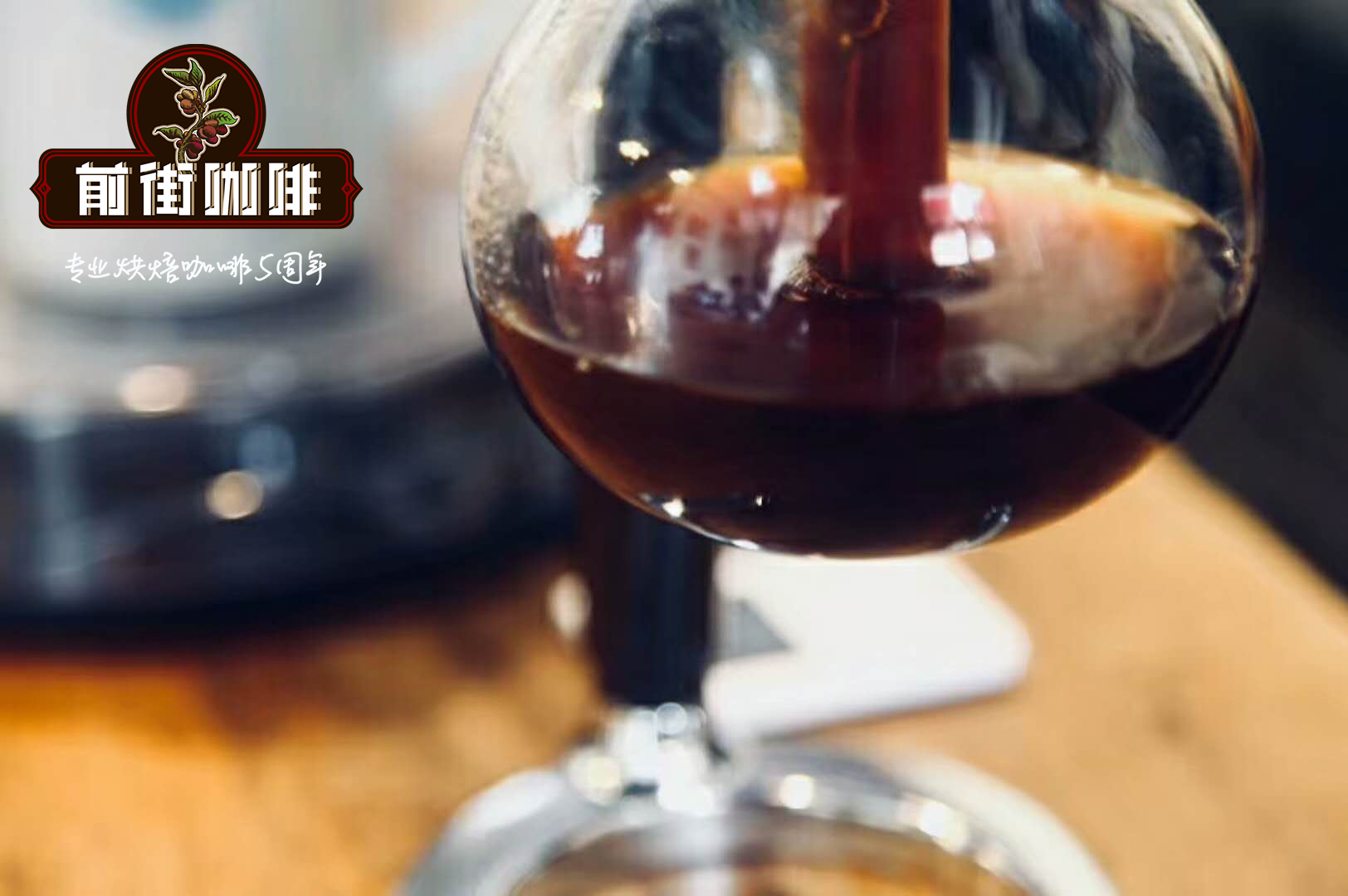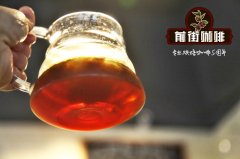World delicious Tour / a pot of coffee roasted in Europe for a century

Professional coffee knowledge exchange more coffee bean information please follow the coffee workshop (Wechat official account cafe_style)
World delicious Tour / a pot of coffee roasted in Europe for a century
There are three major drinks for human beings, namely, wine, tea and coffee, which have different historical backgrounds. Human drinking has a history of more than 12000 years, and there are records of making and drinking alcohol in Mesopotamia (two river basins) dating back to the Neolithic Age. Human beings have a history of drinking tea for more than 4700 years. Coffee has the shortest history of drinking among the three major drinks of mankind, which is only less than 800 years. If we compare the seniority of the three major drinks to the age of a person, the history of drinking alcohol is 85 years old, the history of drinking tea is 35 years old, and the history of drinking coffee is only 5 years old.
Human diet knowledge base is accumulated from experience from generation to generation. The drinking experience of "85 years old" makes human alcohol knowledge has reached a complete and mature stage. therefore, there are perfect wine works, knowledge bases and various educational institutions all over the world today. No matter what kind of wine you want to learn, you can find a perfect and mature knowledge base and learning channels. The "35-year-old" coincides with the experience of drinking tea in the prime of life, so that we can also enjoy a fully complete tea knowledge base, and the knowledge and inheritance of tea has also reached a relatively mature stage. Coffee seniority is only "5 years old", which means that the accumulation of experience and knowledge base in this area is still in the extremely junior stage! Because the time of exposure to coffee is still short, compared with the rich knowledge base in the field of tea and wine, people obviously do not know enough about "coffee". Because we don't know enough, there are new coffee varieties, new coffee bean processing technology, new brewing technology and innovative brewing equipment almost every year. A large number of coffee is on the market, and the rules of international competitions on coffee are being adjusted and changed every year. The current situation of global coffee culture is "their own development, their own interpretation".

What on earth is coffee?
Coffee is a part of food culture. Food culture follows the local environment and develops naturally. Because of their different climate, different regions will gradually develop their own food culture. As a result, coffee from different regions has gradually developed into a unique local coffee culture, following the local climate, eating habits, and culture of life. The root of the difference in coffee culture in different places lies in the "way of roasting coffee." from the point of view of coffee roasters, coffee culture in the world can be divided into three categories and six cultural circles:
1. The three major coffee cultural circles in Europe:
Italy, the five Nordic countries and other European regions
two。 The two major coffee cultural circles in Asia:
North Asia, South Asia
3. North American coffee culture circle:
The third wave and the boutique coffee association
▋ is one of the three major coffee cultural circles in Europe.
Italy | Baking only but not producing areas
Italy is the most exciting and colorful region in the development of coffee culture in the world, and the development of coffee culture in no other country can match it. Most of the most historical, largest and most well-known coffee roasters are in Italy. Why can Italian coffee develop so brilliantly? Perhaps it can be attributed to their unique talent for gourmet cuisine. Coffee is a kind of gourmet food. Italians are good at making good food, do not adhere to red tape, attach importance to the inheritance of experience, and have a unique sense of taste. To create a world-famous Italian coffee culture.
Italy attaches importance to family inheritance. Coffee roasting plants with a history of more than 100 years are spread all over the country and are easily passed on for more than three generations. each Italian coffee family has its own secret recipe for baking and blending, which is never spread out. Such a unique family knowledge and culture makes every Italian roaster brand products have highly recognized flavor and tonality. When buying coffee in Italy, you only recognize the brand of the roaster, not the producing areas of coffee beans, and coffee bars all over the country (coffee è bar) clearly mark the brand of coffee roasters. Italian coffee gluttons are like old smokers who drink only coffee from a particular brand for years, but they can't get used to it with another brand. The closed family heritage makes Italian coffee distinctive and distinctive, but the technology is limited to Italy, and the unique flavor of Italian coffee cannot be enjoyed by baking brands in other countries.
Traditional Italian coffee is "blended coffee". It attaches importance to the roasting flavor of coffee (Roast flavor refers to the flavor given by roasting, such as cocoa, caramel, tobacco, etc.) rather than the flavor of the producing area (Origin flavor refers to the unique flavor of coffee producing areas, such as aroma, flowers, etc.). Italian coffee is a "roasting", "cooked" and "blending" process, and the process is complicated. The vast majority of Italians only drink espresso, usually in one mouthful, with sugar but not milk. Incidentally, Latte means "milk". If you want a glass of Latte in Italy, you will get a glass of milk.

The second of the three major coffee cultural circles in Europe by ▋
Five Nordic countries | shallow baked original flavor
The five Nordic countries, including Denmark, Norway, Sweden, Finland and Iceland, are in the vanguard of the world's exquisite coffee culture. The world's first coffee bar player competition (WBC) originated in Nordic, which is also the region with the highest wages and prices in the world (meaning you can purchase the world's most expensive and best raw coffee beans) and the highest "per capita coffee consumption" in the world. Nordic people attach importance to "design,"sunshine," and "nature." the food emphasizes the natural original flavor, and there is less heavy taste in the diet. Dietary preferences affect the taste of coffee, which makes the flavor of Nordic coffee very different from that of central and southern Europe. Nordic coffee prefers light roasting and pays attention to the presentation of natural bean flavor (Origin flafor) rather than baking flavor, which is exactly the opposite of Italian coffee which prefers baking flavor to coffee producing area flavor.
Nordic people like the original, clean, fresh, bright and delicate aroma, and do not like the taste of soil, tobacco, scorch, and too strong fermented wine, so they can't drink Robusta coffee in the top cafes in northern Europe (which is quite common in Italian coffee). It is also difficult to drink heavy-flavored half-washed Mantenin from Sumatra in Asia, let alone aged coffee such as Malabar in India. Because it's not the taste that Nordic likes. High-quality East African coffee such as Ethiopian Yega Snow Coffee, Kenya, Luanda and high-quality Latin American coffee are common styles loved by Nordic coffee lovers.
The Nordic style shallow roasted coffee has a unique baking method, some people call it "fire light roasting". It is a fast fire baking technique completed with a brisk rhythm in a short time. Nordic style shallow roasted coffee tastes like fruit juice, three points like coffee, refreshing in the mouth, aroma, natural tropical fruit flavor and white flower aroma of high quality coffee beans, and sometimes with nectar smell, rich and meticulous aroma filled with nasal passages. The rhyme between the throat is usually shallow and short. Now Nordic-style light-roasted coffee is also available in countries other than Nordic countries, such as Budin in New York and Fika Fika in Taipei.
The third of the three major coffee cultural circles in Europe by ▋
Other parts of Europe | tend to re-bake
European coffee culture is the most distinct and representative of Italy and the five Nordic countries. Germany, Austria and France traditionally give priority to deep-roasted coffee. Deep-roasted coffee tastes bitter and is usually drunk with wine or milk. Austria has the famous Viennese fancy coffee, while France is represented by coffee milk "coffee O'Lei". French coffee is famous for its bad taste, but in recent years, a new generation of coffee roasting brands have emerged in France, and French coffee is getting better. British tradition is mainly tea-drinking culture (British afternoon tea culture). Coffee culture is driven by the third wave of North America after 2000, and gradually develops the current British coffee, which is similar to the current situation of coffee in New Zealand and Australia. mainly inherited from North American coffee culture. Portugal, Spain and other southern European countries are influenced by Italian espresso culture and generally have the habit of drinking espresso, but the roasting and blending technology of coffee in southern European countries generally lags behind that of Italy, so southern European coffee often has the appearance of Italian coffee, but tastes very different.
Important Notice :
前街咖啡 FrontStreet Coffee has moved to new addredd:
FrontStreet Coffee Address: 315,Donghua East Road,GuangZhou
Tel:020 38364473
- Prev

Does instant coffee cause cancer? Does Nestle coffee cause cancer? Only Starbucks coffee in California causes cancer?
Professional coffee knowledge exchange more coffee bean information please pay attention to the coffee workshop (Wechat official account cafe_style) ▲ in the future coffee products in California must add a possible coffee carcinogenic warning. The California Superior Court ruled on Monday that coffee sellers such as Starbucks and 7-11 must add warnings such as coffee may cause cancer in the future. Put forward this
- Next

Analysis of the advantages and disadvantages of drinking coffee will you gain weight by drinking Nestle instant coffee
Professional coffee knowledge exchange more coffee bean information please pay attention to the pros and cons of drinking coffee in the coffee workshop (Wechat official account cafe_style): 1. Coffee contains certain nutrients. Nicotinic acid in coffee contains vitamin B, which is higher in roasted coffee beans. And there are free fatty acids, caffeine, tannic acid and so on. two。 Coffee is good for the skin. Coffee can promote
Related
- How did the Salvadoran coffee industry develop in Central America?
- What exactly does the golden cup extraction of coffee mean?
- The Origin of Coffee flower
- [2023 Starbucks World Earth Day] there are more meaningful things besides free Starbucks coffee!
- What kind of coffee is there in Spain? 9 Flavors of Spanish Coffee
- Aromatic African coffee| Kenya's coffee culture and historical production area
- Liberica Coffee Bean knowledge: the characteristics of Liberian Coffee beans of the three original species of Coffee beans
- The origin and formula of Spanish latte introduces the taste characteristics of Bombon coffee in Valencia, Spain.
- How to adjust the solution of over-extracted coffee
- What is the tasting period of coffee beans? What is the period of coffee and beans? How should coffee wake up and raise beans?

